Read about the top dehydrating fruit strategies and have your apples, bananas, oranges, peaches, cherries, strawberries, herbs, and vegetables at your elbow — in the kitchen, in the field, or at a survival bunker. Yes, preppers, dehydrated dried fruit lose moisture but maintain flavor, vitamins, and usefulness. Read our article to understand the ideal temperature and various techniques to prepare this great snack straight in your kitchen.
We always say that you cannot rely on electricity for survival, and therefore on electrical appliances. Therefore, it is better to stock up on food that does not need a refrigerator to store it for the long term. Dehydrated fruits are just this type of food.
Of course, you can go to the store and buy ready-made dehydrated fruits, but we, as experienced preppers, advise you to do it yourself.
Firstly, you will know for sure that there is nothing superfluous in the composition of these snacks. Secondly, you will get exactly the level of dryness that you need. And thirdly, no one will limit your imagination. Mix dried strawberries with dried apples — why not? Learning how to dehydrate fruit even may get you a new hobby. To start, you may not even have a dehydrator at home. Your oven will do.
Prepare to become a fan of this food!
A Few Dehydrating Fruit Tips
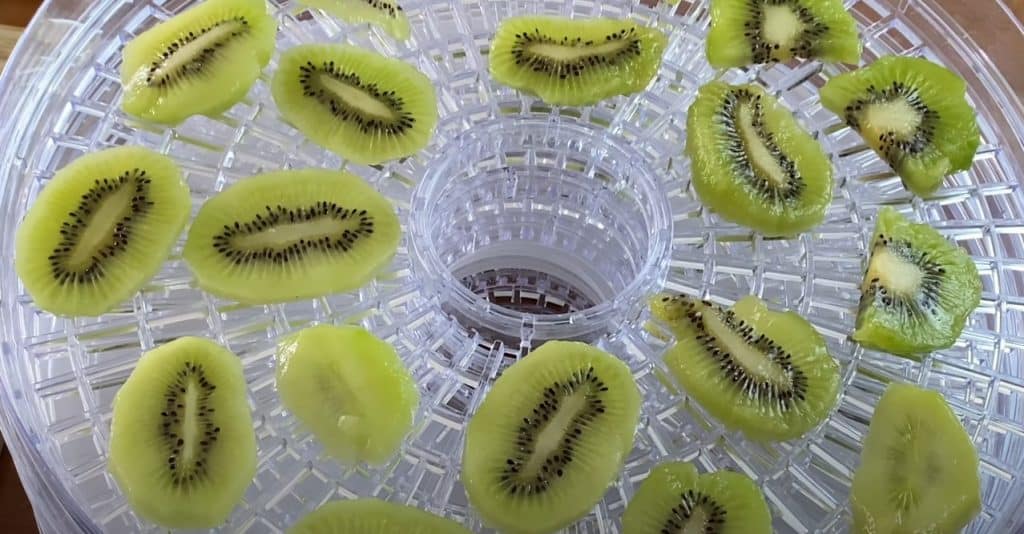
- Choose the right fruit
They should be ripe, but not too ripe. If the fruit has dents or discoloration from overripe, this one will not work but will quickly deteriorate. Ripe fruits are better than unripe ones because they have more sugar and are more nutritious.
- Wash the fruit thoroughly
First, you need to remove traces of soil or dirt, and secondly, remove the wax and pesticides that are often applied to fruits to protect them from damage.
- Make small pieces
Do not try to dehydrate the whole fruit, but rather cut it into small pieces.
- Dehydrate till the right condition
When finished, the fruit should not be brittle. It should bend or stretch well.
- Dehydrate fruits in the right season
The fruit is a seasonal thing, and different fruits ripen at different times. Since you want fresh, ripe fruits, you need to take them during their ripening period. Remember to pay attention to this when planning the dehydrating process.
Preparation Stage of Fruit Dehydrating
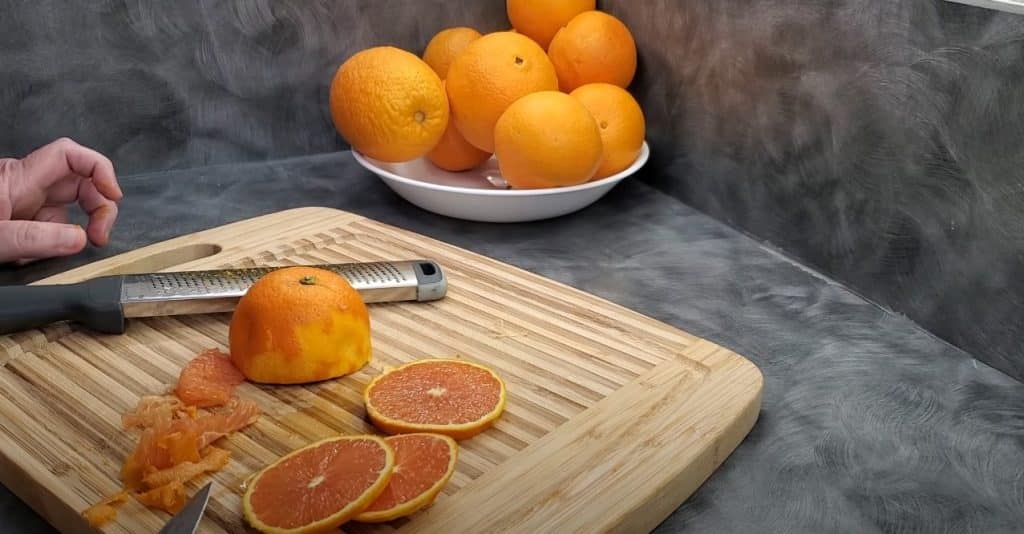
Fruit Slicing
After you have carefully selected and washed the fruit, you need to cut it. Slicing fruit is a task for a professional, or at least requires special skill.
The point is that you need to stick to a specific thickness when slicing the fruit.
Pieces that are too thin can dry out, but too thick pieces may not dry out at all, no matter how long you spend on dehydrating fruits.
Stick to roughly the same size fruit pieces. This will allow everything to dry on the same level since each piece will need one time for the drying process. The thicker the slice, the longer it will take to dehydrating fruits.
If you are used to cutting with a sharp knife, that is fine. But we still consider the slicer to be the most convenient device for this. For example, you can purchase the Madeline slicer. With it, you will quickly cope with the task.
Fruit Processing With Water and Lemon Juice
Rinse the fruit with cold water to remove any excess particles so they become smoother and nicer.
Some types of fruit can still be treated well with a little lemon juice. These fruits include:
- bananas
- strawberries
- apples
Lemon juice is needed to kill bacteria and keep the fruit from discoloration. Otherwise, they will turn brown before you put fruits in the dehydrator. Lime juice is also fine.
Arrange Fruit on Dehydrator Racks
You also need to arrange the fruit correctly. You cannot just pour them onto dehydrator trays and consider the work finished on this.
Each piece should lie without climbing on top of the other. You can even leave small gaps between the pieces so that the drying process goes the same for everyone.
What temperature to put on the dehydrator
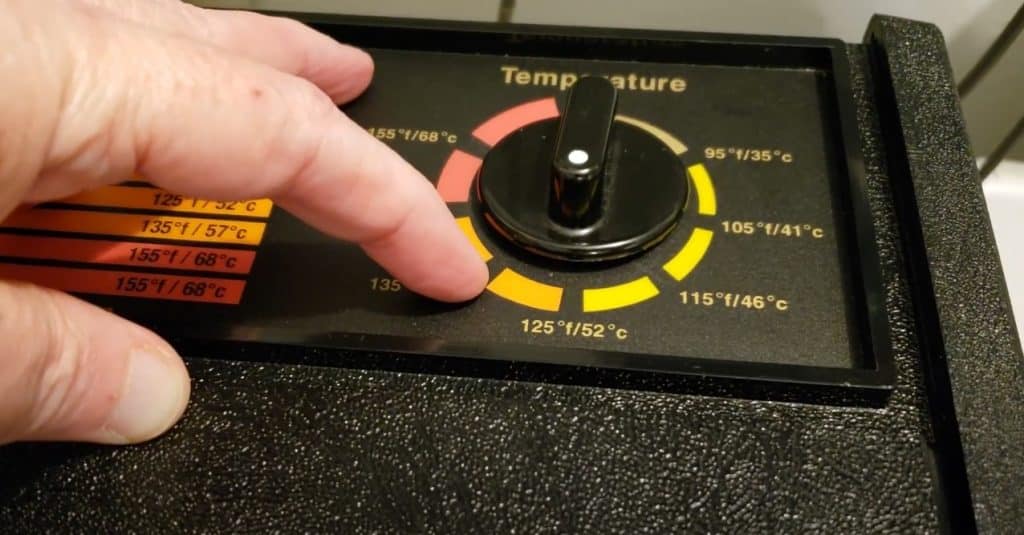
If the temperature is set too high, the fruit leather will harden quickly and prevent the inside from drying out.
Fruit dehydrating is not a fast process, so lower temperatures are best. The best would be to put 125-135 degrees Fahrenheit, that is enough.
How to Dehydrate Fruit
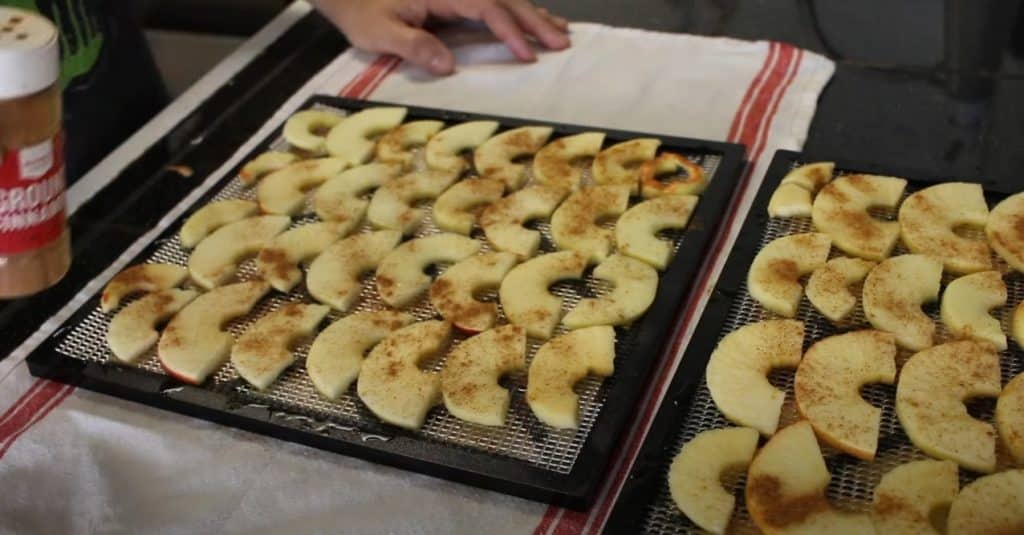
We already mentioned that the best temperature to dehydrate fruit would be something in the range of 125-135 degrees. Now let’s look at the drying times.
Drying times depend on the type of selected fruit, here are approximate figures:
- Strawberries: 7-15 hours
- Apples: 7-15 hours
- Kiwi: 7-15 hours
- Bananas: 6-10 hours
- Cranberries: 10-12 hours
- Pineapple: 10-18 hours
- Cherries: 13-21 hours
- Grapes: 22-30 hours
You might think these are not very accurate numbers. Indeed, there is a difference between drying fruit for 6 hours or 10.
But only you can understand when the dehydrated fruit is ready. It depends on many factors, from your preference to the type of food dehydrator.
We recommend setting the timer on your food dehydrator to a lower time and then checking the desired condition’s degree.
By the way, if you plan to dry fruits for long term storage, it is better to dry them harder, so they will not deteriorate. And if you make dried fruits healthy snacks to eat with friends when watching a movie the next weekend, then you can leave them moister.
Experiment and get the dehydrated fruit that you want.
If you really want to boost your survival knowledge, read our extensive survival prepping guide: get to learn a lot of exciting facts about the first-class survival gear, the top-rated survival skills, and everything a real preppers, true homesteaders, and careful survivalists want to know!
Factors Influencing The Process Of Dehydrating Fruit
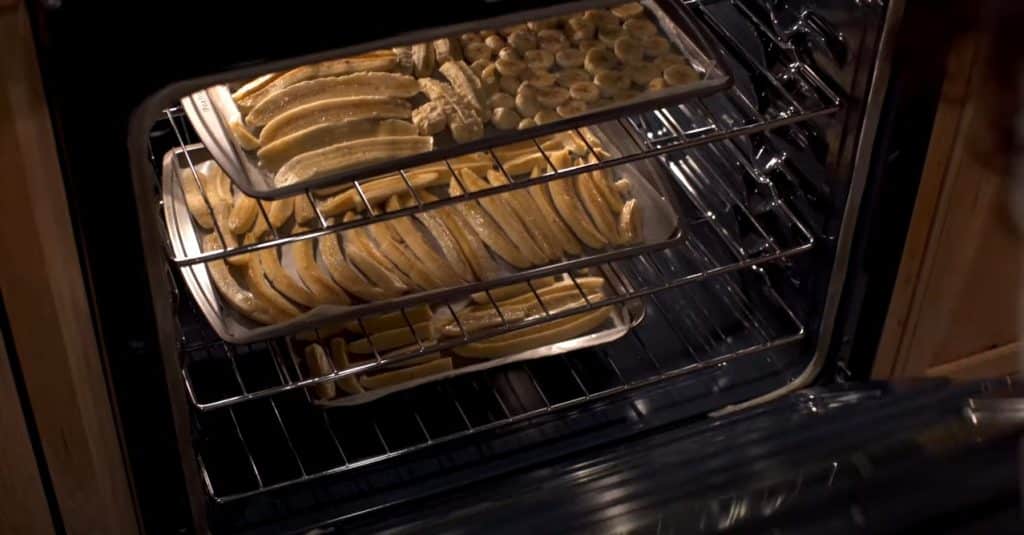
Fruit type
Different fruits have different compositions, which determines the result. If you are dehydrating apples, you get one result. If you take mango slices, it will be a completely different snack, with a different dryness degree.
Amount of Fruit Slices in the Oven or Fruit Dehydrator
Read the instructions for the food dehydrator carefully. Some of them can only hold a limited amount of fruits.
Dehydrator Model
In general, you do not need anything complicated and sophisticated. A simple oven will also do. Still, cooking healthy snacks with a modern food dehydrator is much more enjoyable. The new devices have various additional features that make the activity more fun.
Temperature
We talked about a temperature of 125-135 degrees, but there is an opinion that it is better to set it to 105-110 degrees. This will prevent the fruit from losing nutrients. But keep in mind that in this case, the process will become even longer.
Humidity
The higher the humidity, the longer the dehydrating food process will take.
Mixing Different Fruit Types
If you want something truly unique, try mixing different types before putting them in the food dehydrator. Nobody forbids you to mix bananas, apricots, and peaches. Yes, you are unlikely to get the result of dryness, but it may taste better.
To Sum Up
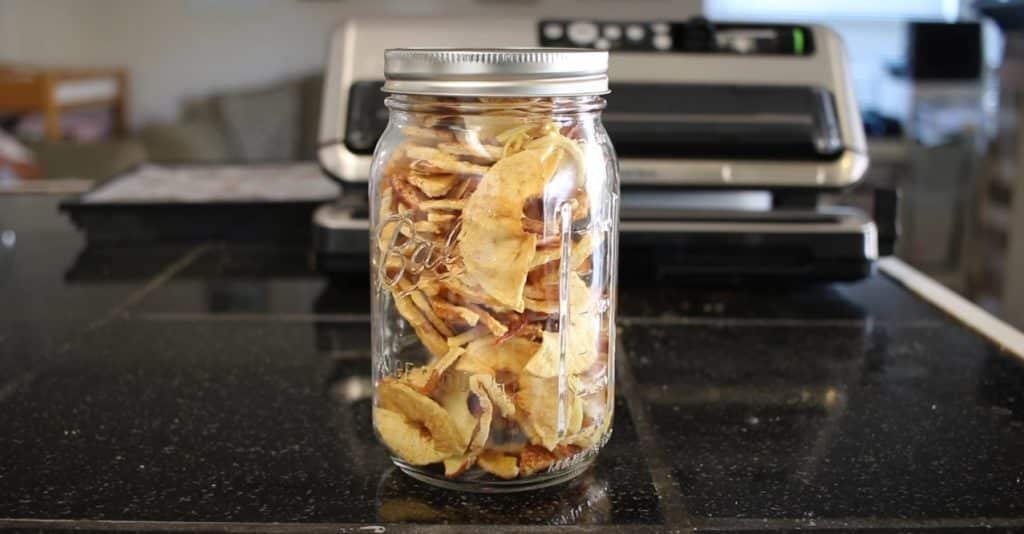
It is recommended to use dried fruits in all meal plans because it is an amazing source of vitamins and nutrients. And if you are keen on prepping, then with the addition of dried fruit, you can diversify your food supplies for a long time.
FAQs
What fruits can I dehydrate?
Any fruits! But the most popular are probably apples, strawberries, bananas, peaches, and apricots. Remember that all fruits require different cooking times. For some, 6-8 hours will be enough, and some fruits will need 12 hours or more. Also, sprinkle some fruits with lemon juice before placing them in the food dehydrator: these concerns strawberries, apples, and bananas.
How long does it take to dehydrate fruit in a dehydrator?
The dehydration time depends not only on the type of fruit but also on personal preference for the result, food dehydrators, and even moisture in general. But the approximate indicators are as follows:
- dehydrating apples will take 12 hours on average;
- strawberries — 7-15 hours;
- bananas — 6-10 hours;
- peaches — 8 – 36;
- apricots are also about 12 hours.
You can google the fruit you are interested in and stick to the low figure when cooking the first time. And then increase it if necessary.
Is dehydrating fruit healthy?
Dehydrated fruit is as healthy as regular fruit. They are rich in vitamins and nutrients but also have a lot of sugar. Due to the abundance of fruit sugar, this snack is recommended to be eaten in the morning and small quantities. But in any case, it is better to eat dried fruit than a packet of chips. So it can be considered as healthy snacks.
What time do you spend on dehydrating fruit?
In general, your result depends on your preference and when you are planning to use dried fruit. If you plan on eating them soon, you can leave them juicier. If you want to put them away in long time food storage, it makes sense to dry them harder. You can slice the fruit in half and check the dryness in the center.
How to make dried fruit chips?
If you want to make dried fruit chips, then follow the simple steps:
- Wash and slice fruit into small thin pieces.
- Rub them with cold water to remove excess.
- Drizzle with lemon juice.
- Arrange the fruit on a dehydrator tray (if using an oven, place a parchment paper layer).
- Dehydrate at 125-135 degrees till you get crispy slices.
Our favorite recipes are banana chips and cinnamon apple chips.


